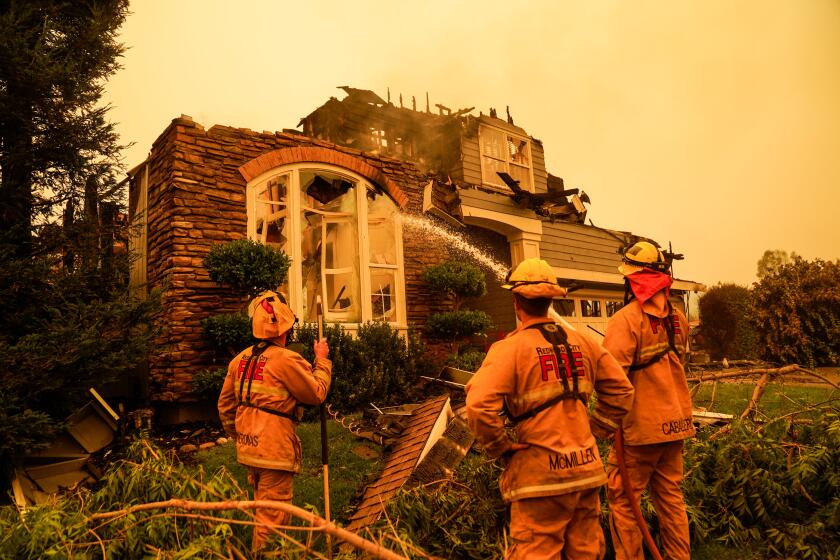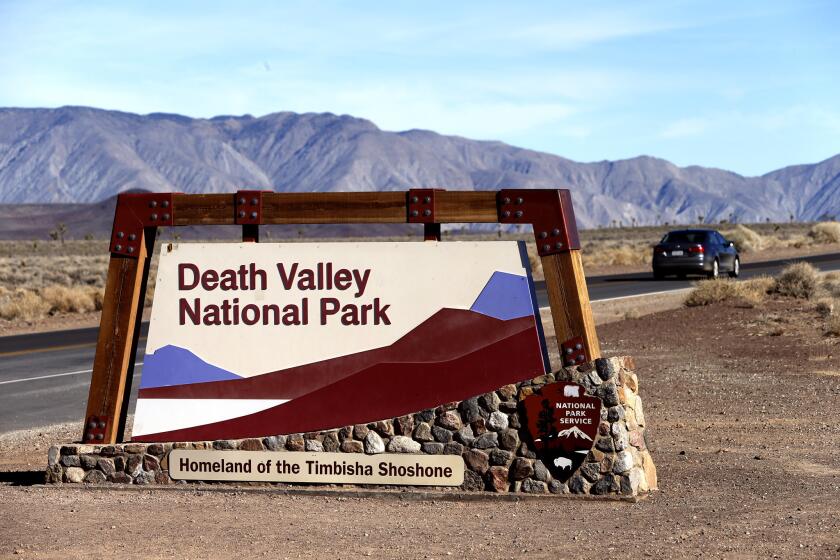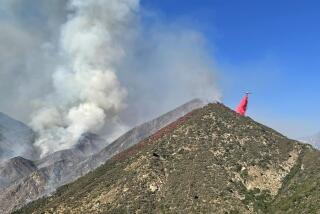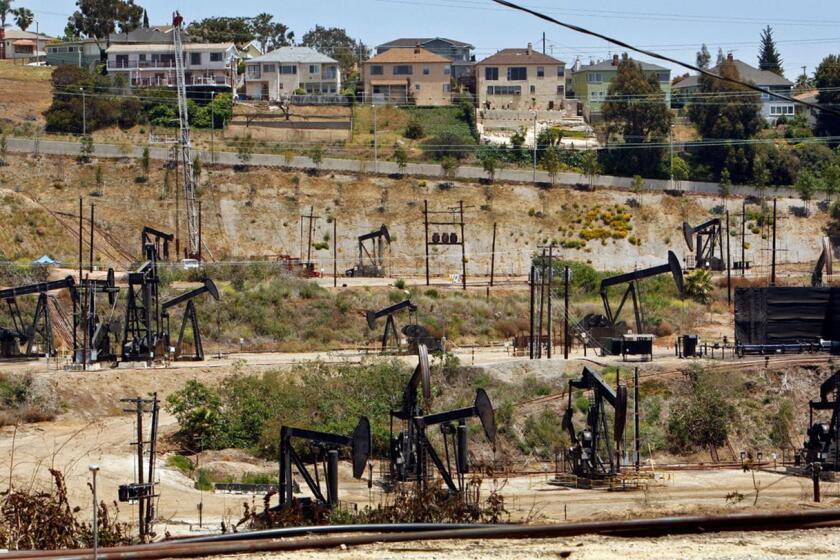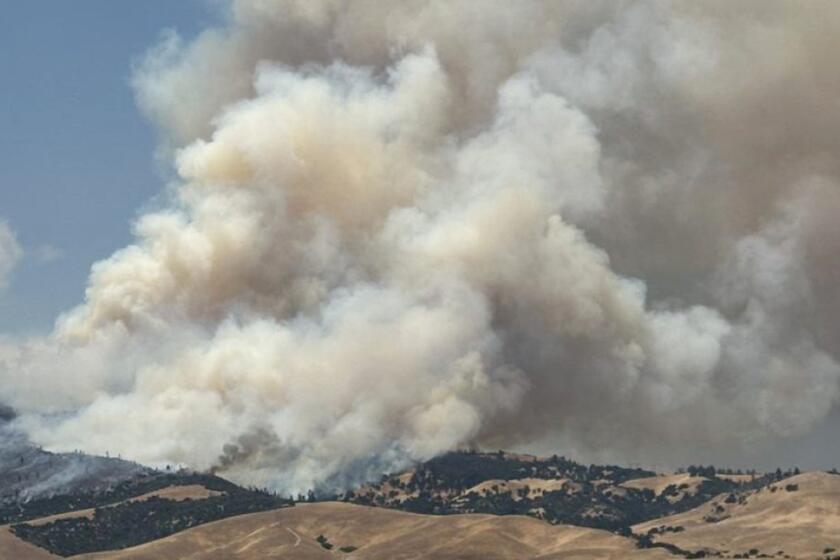Extreme fire danger in Southern California amid new heat wave

Extreme fire danger is likely for parts of Southern California this week as a new firestorm besieged parts of Northern California.
The National Weather Service issued a red flag warning for the mountains of Los Angeles and Ventura counties and the Santa Clarita Valley, noting the conditions could last for several days.
The warning includes the potential for “rapid fire growth and extreme fire behavior if ignition occurs,” as well as the threat of smoke plumes and heat-related illnesses.
But it’s the combination of variables that is the greatest concern as a new heat wave bears down on the region: The forecast calls for gusty Santa Ana winds up to 40 mph, humidity levels in the teens and single digits, and temperatures in the valleys as high as 100 degrees by Wednesday, and in the 90s in some coastal areas.
It’s what’s known as “fire weather.”
Thousands of people are under evacuation orders as multiple fires burn unchecked in Napa, Sonoma and Shasta counties.
A heat advisory will be in effect from 10 a.m. Tuesday to 8 p.m. Thursday throughout much of the region, and the National Weather Service is urging residents to take extra precautions when spending time outside.
“Drink plenty of fluids, stay in an air-conditioned room, stay out of the sun and check up on relatives and neighbors,” officials said.
The forecast comes on the heels of a record-setting summer, when high temperatures seared their way into the hottest August on record in California.
In August, Death Valley saw some of the hottest days ever recorded on Earth. Woodland Hills climbed to 121 degrees on Sept. 6 — an all-time high for Los Angeles County.
“We are expecting some hot temperatures this week,” said Mike Wofford, a meteorologist at the National Weather Service in Oxnard. “You’ll notice it warmer today, but especially tomorrow, and Wednesday and Thursday, which will probably be the hottest days.”
Record temperatures are drawing a special type of visitor to Death Valley National Park this summer.
Wofford said a late September heat wave isn’t unusual.
“September can often be our warmest time of year,” he said, noting that Sunday was the 10-year anniversary of the hottest day in downtown L.A.: 113 degrees.
But the weather can still spell disaster. In Northern California, residents of Napa and Sonoma counties were evacuated Sunday evening when powerful Diablo winds ignited another series of wildfires.
Evacuation orders were also issued in Butte and Shasta counties, where the fast-moving Zogg fire is now growing.
Red-flag warnings will remain in effect for much of the northern portion of the state through at least 8 p.m. Monday.
In Los Angeles County, a new brush fire, the Martindale fire, broke out Monday afternoon in Bouquet Canyon, about 15 miles northeast of Santa Clarita. Buffeted by strong winds and fed by thick, very dry brush, the blaze spread to 300 acres in about an hour, prompting evacuations of about a dozen homes south of Bouquet Reservoir.
Wildfires burning throughout the state are also contributing to poor air quality. A smoke advisory has been extended through Monday in Los Angeles County, where the South Coast Air Quality Management District said the nearby Bobcat fire in the Angeles National Forest is still producing smoke.
Fire crews turned a corner on the massive blaze after weeks of slow-going progress, but containment numbers dropped 3 percentage points on Monday — from 65% to 62% — as the winds picked up.
“Increased activity is anticipated within containment lines near Mt. Wilson and Mt. Lewis as the wind speeds increase and relative humidity decreases,” the U.S. Forest Service said.
The fire, which ignited Sept. 6 and has repeatedly threatened Mt. Wilson, has burned more than 114,000 acres and destroyed dozens of structures, most of them in the Antelope Valley.
More to Read
Sign up for Essential California
The most important California stories and recommendations in your inbox every morning.
You may occasionally receive promotional content from the Los Angeles Times.
